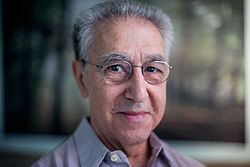Alexander Berzin | |
|---|---|
 Alexander Berzin, April 2015 | |
| Personal life | |
| Born | 1944 |
| Notable work(s) | Relating to a Spiritual Teacher: Building a Healthy Relationship (2000), Developing Balanced Sensitivity (1998), Gelug/Kagyu Tradition of Mahamudra (1997), Taking the Kalachakra Initiation (1997) |
| Education | Ph.D., Harvard University (1972) MA, Harvard University (1967) BA, Rutgers University (1965) |
| Religious life | |
| Religion | Tibetan Buddhism |
| Website | studybuddhism.com |
Alexander Berzin (born 1944) is a scholar, translator, and teacher of Tibetan Buddhism. [1]